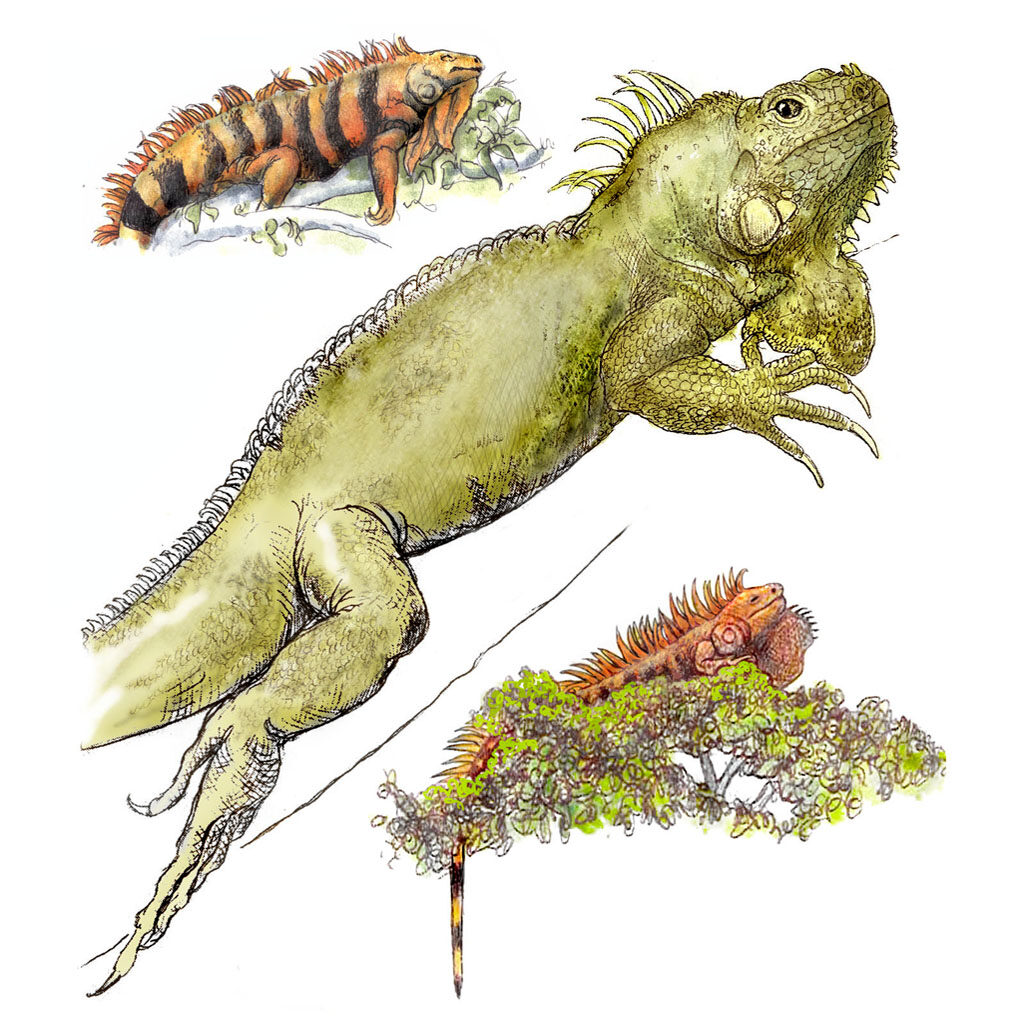Green Iguana

No, I’m not stuttering, that’s actually our big green iguana’s specific name. Also called the Bamboo Chicken, it’s been on the Mayan and local people’s menu for a thousand years, and supposedly tastes, well, y’know, like chicken. It’s not eaten so much any more, being on the threatened species list, and in fact the Belize Iguana Project at the San Ignacio Resort Hotel is actively engaged in protecting and restoring their numbers, educating the public, and raising interest in protecting them.
The green iguana is a fascinating lizard. Starting out at 6″- 9″ freshly hatched from the egg, a green iguana can reach a huge 5′-7′ within six or seven years. The babies in Belize are emerald green with a touch of turquoise, but in other parts of their range they vary from lavender, black, and even reddish brown to brilliant blue. While the colors tend to fade a bit as they grow, females in Belize remain green while the males become a flashy bright orange when mature. That’s an immature green male in the picture above.
We see a few green iguanas down along the Macal at the foot of BIB, with orange specimens up to 5′ long being reported. Below the dams, where the Macal becomes a lazy river again, you’ll find collections of huge orange males sunning themselves and protecting their territories high in the vine-draped trees overhanging the water, with younger males relegated to lower, shadier spots along with the green females.
At times a territorial argument will erupt, and it is quite exciting to watch hissing orange heads bobbing maniacally and dewlaps flipping out to become orange chin-flags. Sometimes there are even wrestling matches with the loser plunging down into the river. Falling is no big deal, actually, because iguanas rest above rivers just so they CAN drop into the water when danger threatens. A big hawk flying overhead can cause an almighty splash of spooked iguanas.
Iguanas are herbivores, eating leaves, flowers, shoots, and fruits, some insects (maybe accidentally) and have been observed eating bird nestlings. Their teeth are very sharp and serrated like a steak knife. More info here.
Native from Mexico to Brazil and Paraguay, iguanas have also been introduced to islands in the Caribbean, and to Florida, where they are considered an invasive species. Since they are cold-blooded, needing to bask in sunlight to reach active status, relatively low temperatures in Florida can leave them chilled and unable to move, and they sometimes fall from trees during the night. Fun Facts here.
Baby green iguanas are popular pets, but are difficult to keep happy with regard to temperature and humidity. The fact that a sweet little 10″ lizard grows to be six feet long is also an impediment to successfully keeping iguanas in captivity. Not recommended!